Although it may sound unbelievable to many, 130 years ago the streets of Las Palmas blew a whistle and the noise and squeak of wheels on the rails. It was in October 1890, when the first steam trains of the street railway (predecessor of the tram) with passengers appeared on the streets of Vegueta, Triana and La Luz. Today, only a few artifacts in the streets of the city recall their glory.
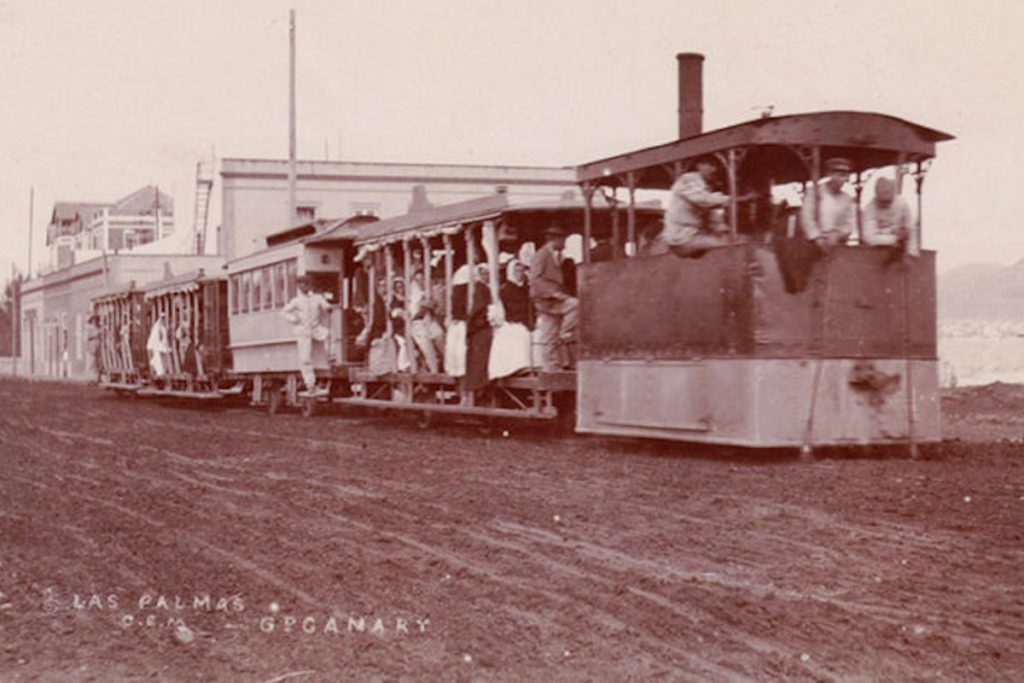
The construction of the railway was first initiated by Juan Rodríguez Quegles, a representative of Compañía de Almacenes Generales. On June 6, 1864, he presented in Madrid the construction of a street railway connecting Las Palmas with the port of La Luz. The railway was to start on Calle de Muro next the Guiniguada Canal, which separated Triana and Vegueta, through Plaza de Cairasco, Calle General Bravo (then Calle de San Francisco), Plaza de San Bernando, Calle Viera y Clavijo and Calle Domingo Navarro. Finally, it was to join the road connecting Las Palmas with Puerto de La Luz.
Steam era
The first concession was finally obtained by Juan Bautista Antúnez on the basis of a royal decree of 24 October 1884. The decree authorized him to build a street railway with animal-drawn vehicles from Las Palmas to Puerto de La Luz. On May 30, 1885, a new law came into force, under which, in September of the same year, Antúnez obtained a permit to use steam power. The trial operation of the street railway did not begin until 5 years later, on July 18, 1890. At that time, the first locomotive with one wagon came out on the line.
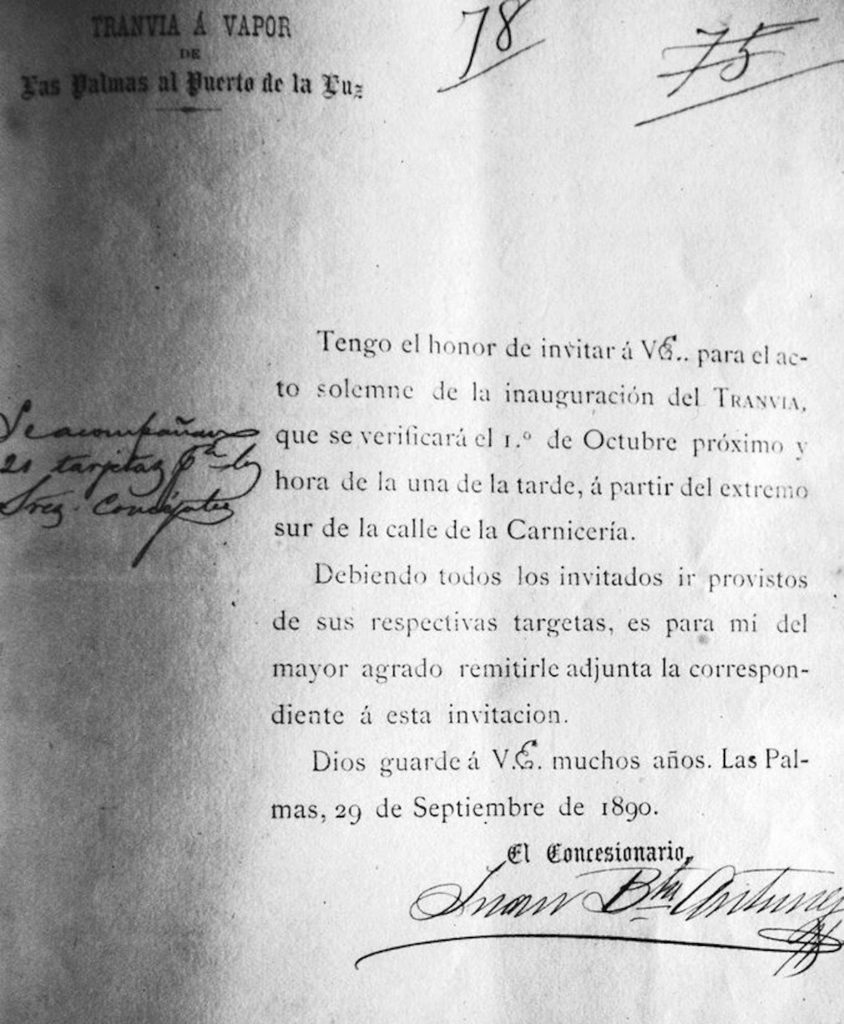
The track started at the end of Calle Mendizábal in the Vegueta area. She walked past the market, crossed the Guiniguada Canal with a bridge, and reached Calle Triana through San Telmo Park and today’s Calle León y Castillo to Alcaravaneras Beach. The route continued around today’s Real Club de Náutico, where one of the garage was located, and further along the route of today’s Calle Alvear through Santa Catalina Park to the port of La Luz. The track with a gauge of 1,000 mm measured 6 kilometers. From 1893, it was extended by a section in the docks of the port.

The railway was inaugurated on October 1, 1890. Two Krauss steam locomotives with serial numbers 2,243 and 2,244 delivered on February 22, 1890 began operating. On March 17, 1891, a third locomotive from the same manufacturer with serial number 2264 was added to these two locomotives.
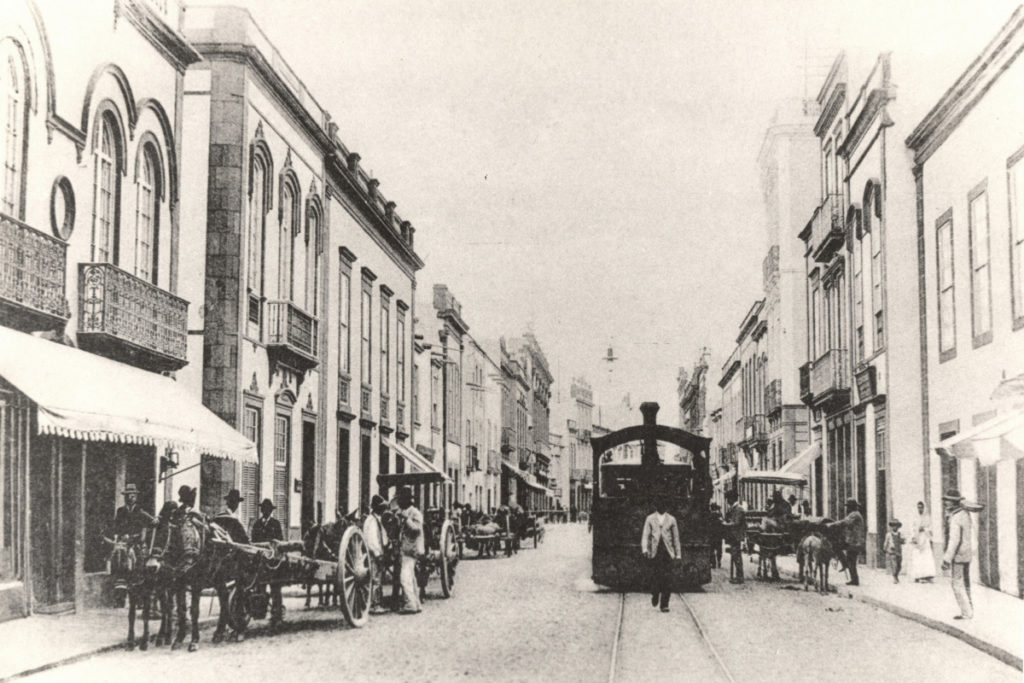
The popularity of the street railway grew rapidly. At the beginning of the traffic, she drove from 07:00 to 19:00 at hourly intervals, at peak intervals of 30 minutes. Already in May 1892, the traffic was extended from 03:45 to 19:30 and later until 23:00. Fares in the 1st class were set at 35 cents, in the second at 20 cents and in the third class cost 15 cents. The price list from the beginning of the traffic will also include such items as shipping for a cow, goat, sheep, hen and the like.
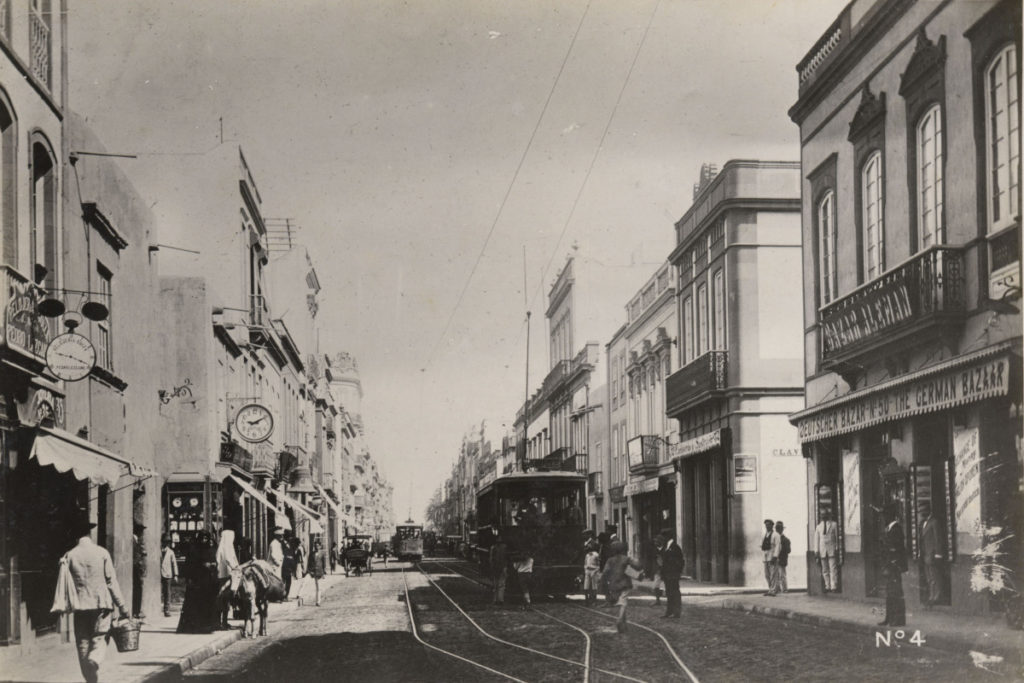
The era of electricity
The growing popularity of Gran Canaria as a spa destination attracted more and more tourists who came to the island by boat to the port of La Luz. On March 16, 1901, Juan Bautista’s brother Luis Antúez obtained permission to double the track. Luis Antúez became the owner of the license on the basis of a transfer from his brother on November 25, 1896.
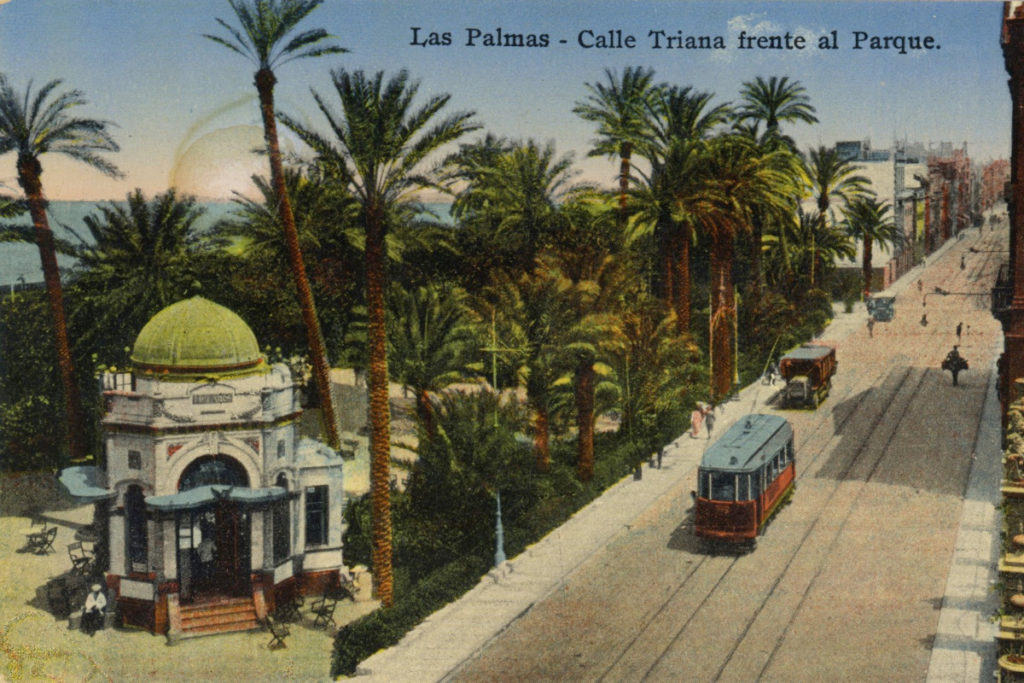
On May 23, 1903, a permit was issued to replace steam traction with electric. As Luis Antúez did not have sufficient funds for such a major reconstruction, he decided on September 7, 1908, to transfer the concession in its entirety to the Madrid-based Sociedad Banco de Castilla. Immediately after taking over the concession, it started electrifying the line.

The first trams set off for the streets of Las Plamas in 1910. The last ride of the steam set took place on August 28, 1910. It was a great relief for the city. The steam locomotives used low-quality coal, and then the main street of Calle Triana was full of soot and dust. Thanks to this, the name “Coffee maker” was used among people among them.
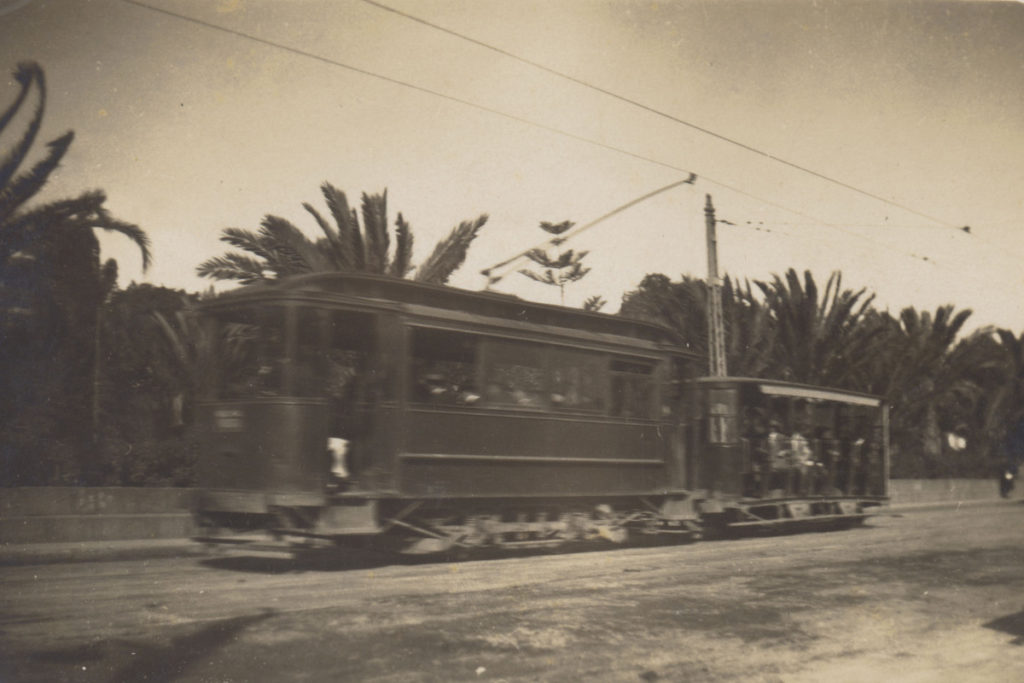
Electric traffic was provided by 14 motor vehicles, all for passengers in the second class. 10 of them were open and 4 closed. It was possible to connect other wagons to them. These consisted of wagons closed 2nd class and wagons 3rd class, which came from the steam era.
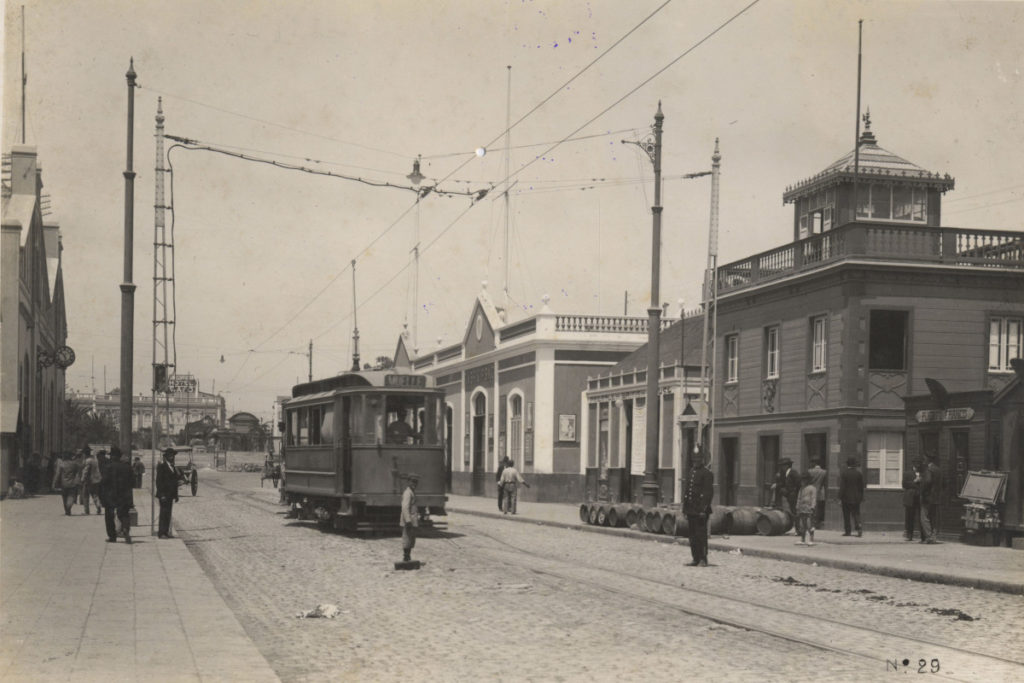
A significant increase in car traffic and especially the popularity of buses caused a gradual decline in tram transport. The last nail in the coffin of a tram in Las Palmas was aded by the Spanish Civil War. On January 31, 1937, trams took to the streets of Las Plamas for the last time. Subsequently, on March 31, 1937, the liquidation of the overhead line and other parts of the line began.
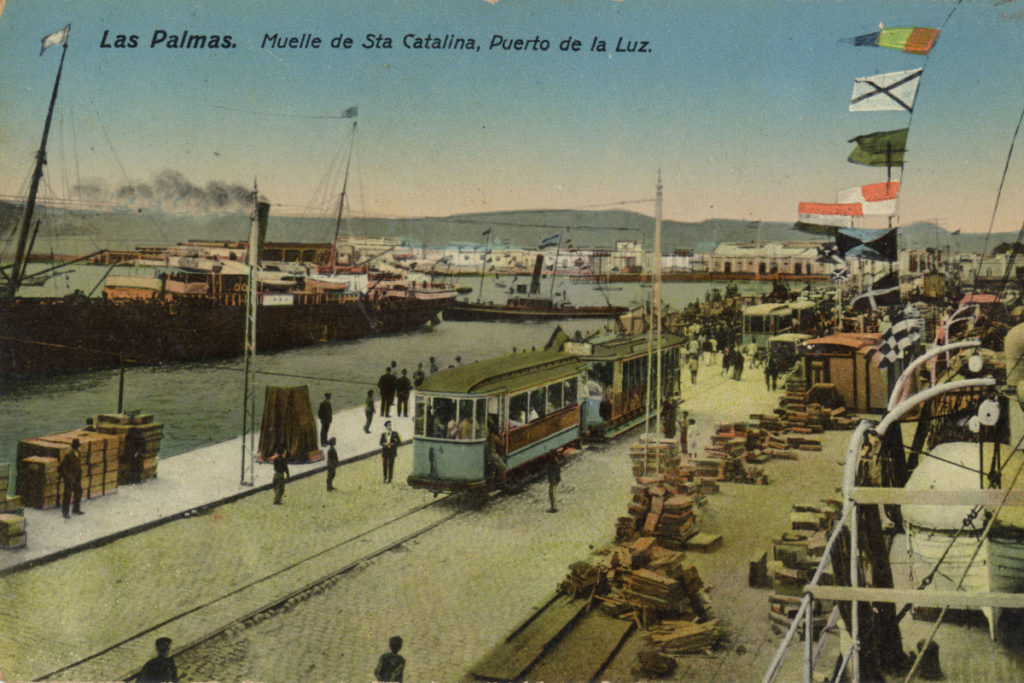
Electrification and new vehicles have also helped to improve traffic. Since the start of operation of the electrified line, the timetable has also changed and the tram has operated from 04:30 to 23:00 at 15 to 30-minute intervals. A 1st class travel ticket cost 40 cents, 2nd class 30 cents and 3rd class 20 cents. From May 1, 1915, the 3rd class was abolished and the fare in the first class did not change, but in the second class it became more expensive by 5 cents.

Return of steam
If one war ended the operation of trams, then the other contributed to the renaissance of street rail transport. The lack of diesel and petrol during World War II caused Las Palmas City Hall to decide to restore rail transport in the city. Since the power line had already been dismantled, the fastest way to restore rail traffic was to use steam locomotives.
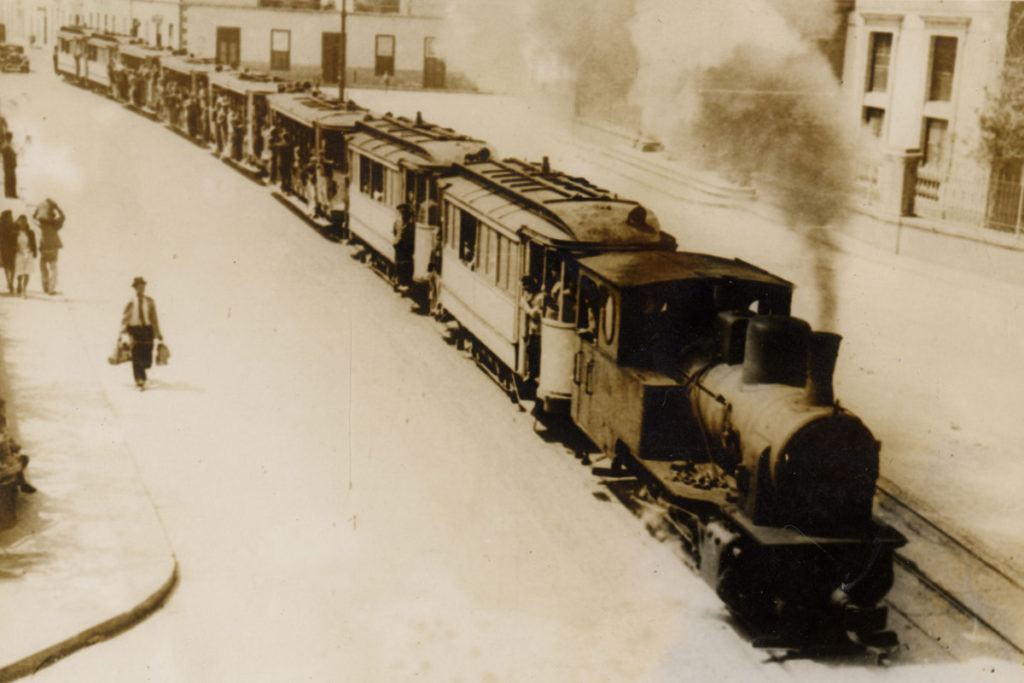
The first German locomotive used to expand the port of La Luz was used. After its reconstruction to a gauge of 1,000 mm, it began to serve in the streets of the city with a set of 8 wagons, originally from a tram. It was later joined by the English locomotive Sharp-Stewart from the Cariñena-Zaragoza railway and two closed Krupp wagons.
The modern steam street railway quickly gained the popular name “La Pepa”. This is related to the date of the decision to resume traffic on March 19, 1942. Regular operation began on March 23, 1942. Trains ran from 06:00 to 22:30 at hourly intervals. For the first time, band fares also appeared and the ticket cost from 20 to 40 cents.

“La Pepa” operated for only 2 years and less than 3 months until June 15, 1944. From that day on, it operated only on Sundays and holidays, later it appeared in traffic only on special occasions. Finally, in November 1947, she appeared on the streets for the last time.
Safety first
Securing traffic was relatively easy. Initially, when the one track was used, there was a turnout in the middle of the track. As a maximum of two trains were running on the track even during rush hour, the timetables were set so that the trains crossed in this turnout and only then could they continue to run.

After the track was doubled, major problems arose only after the start of electrical operation. At that time, there were up to 10 sets on the track at peak times. However, due to the width of the road, the final section from Calle Triana to the final one on Calle Mendizabál was single-track, as was the opposite section from Muelle de Santa Catalina to the end of the line in Puerto de La Luz. The relay pin system was used. A set from a double-track section could enter a single-track section only after the driver received a pin from the driver of the oncoming track.
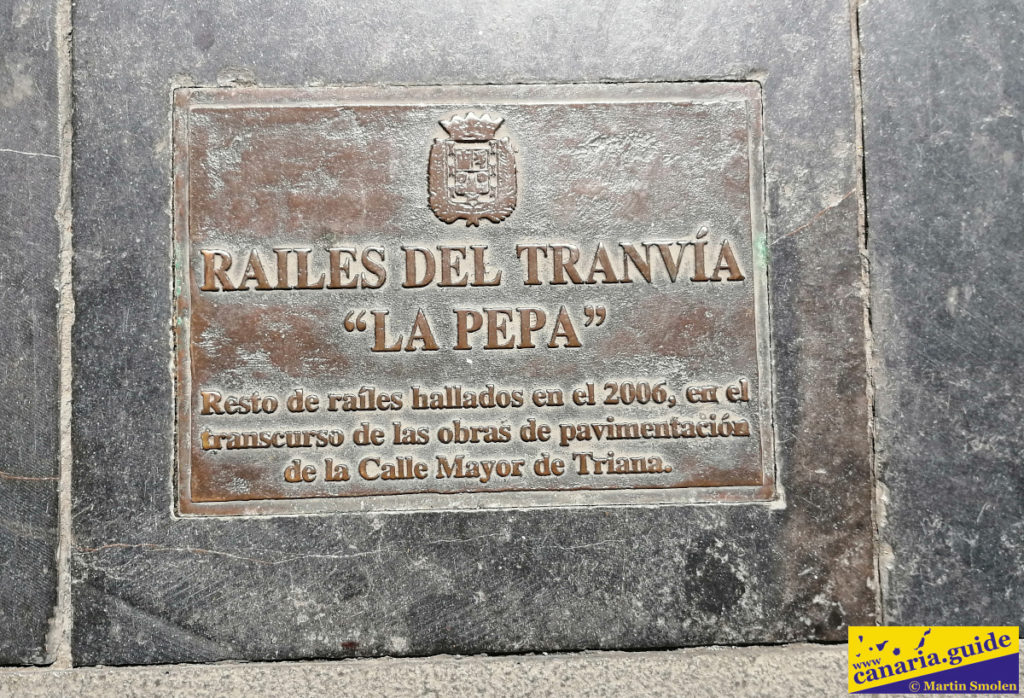
During the “La Pepa” era, safety in single-track sections was relatively easy to ensure, as there was always only one train on the track.
Although the busy first steam street rail came from the standard series, due to traffic in the city received special protective covers. However, even this did not prevent various collisions, especially with children. As early as October 10, 1890, local newspapers wrote about the first tragic accident. The growing number of accidents has led the company to an interesting solution. In the section from San Telmo Park to the end of the track on Calle Mendizábal, a company employee was walking in front of the train, waving a flag and shouting at people.
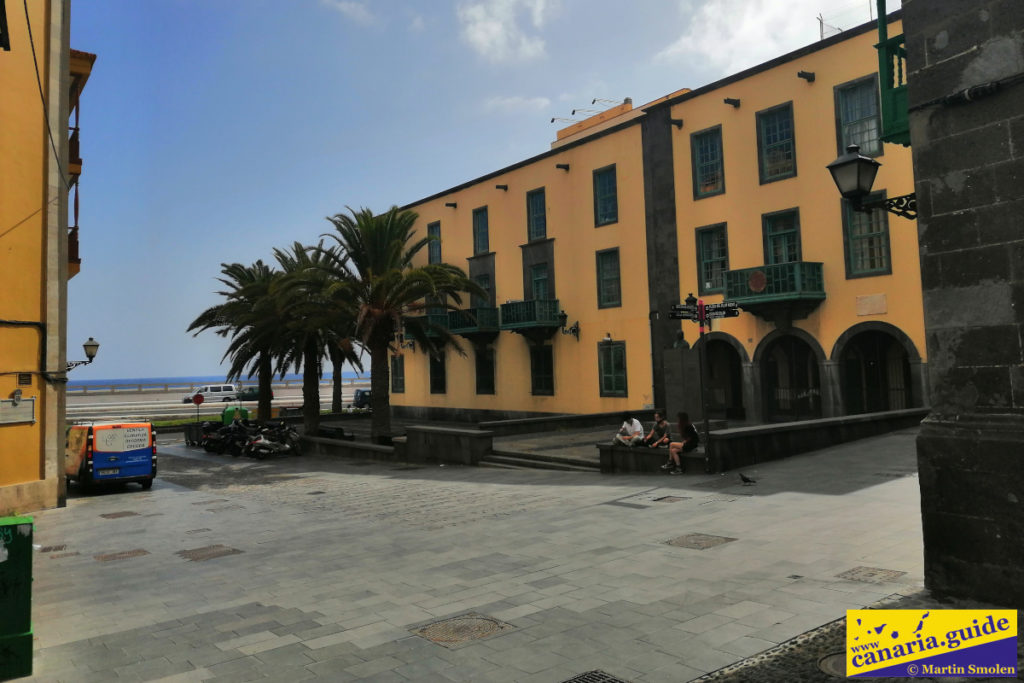
Silent witnesses
Today, when visiting Las Palmas, it occurs to many that a street steam train and later a tram ran 130 years ago. In several places, however, there are still remains that remind us of them. One of them is the preserved branching of the rails on Calle Triana.
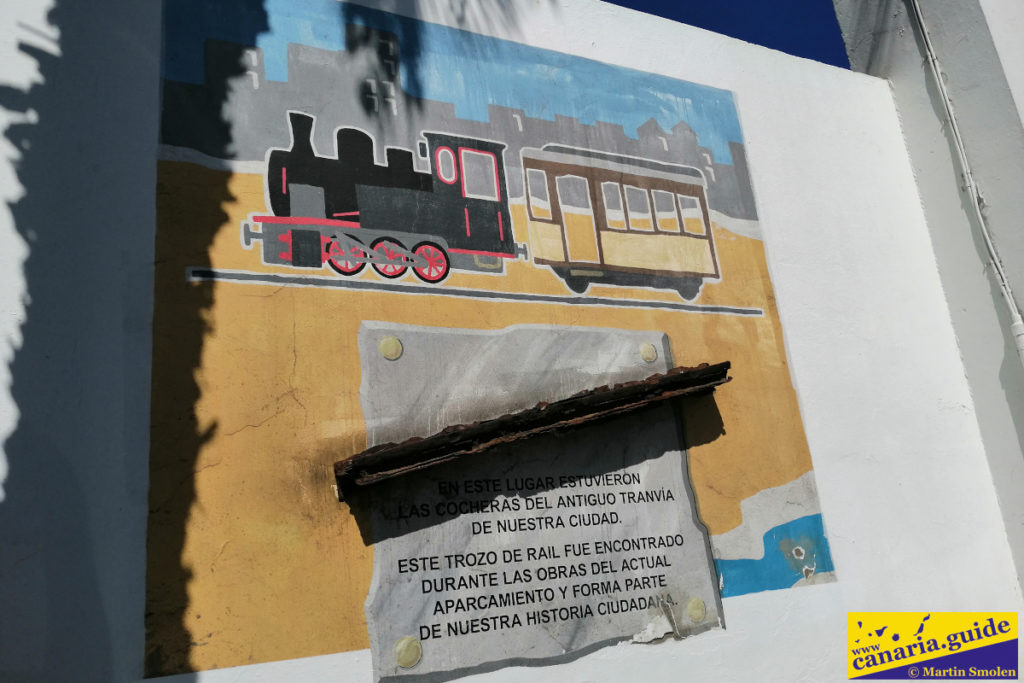
At the Real Club de Náutico, a piece of rail discovered during the reconstruction of the car park is reminiscent of the famous glory of rail public transport. In the past, one of the two garages was located at this place.
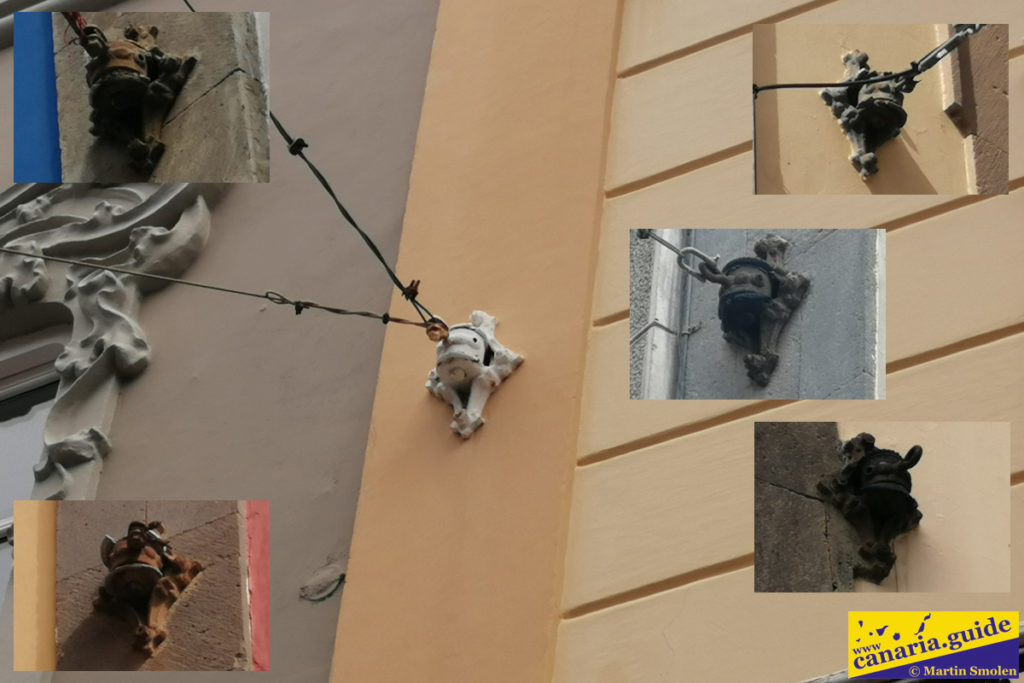
Perhaps the most striking witnesses are the mounts of the former traction line on Calle Triana and Calle Mendizábal. It was attached to the facades of the buildings lining the street. I counted 14 of them, but with the gradual reconstruction of buildings and the incorporation of electrical cables into the walls, it is assumed that these will also disappear very quickly.

An attempt to restore rail transport in Las Palmas took place in the 1960s and 1970s. However, the ambitious overhead railway project ended in failure. However, you can read about it in a separate article.
Note: Ticket prices are in cents. However, they are not about eurocents. Spain used the Spanish peseta as the currency unit, corresponding to 100 cents. For a better picture of its value, the price of 1 kg of bread at the turn of the 19th and 20th centuries was about 50 cents.
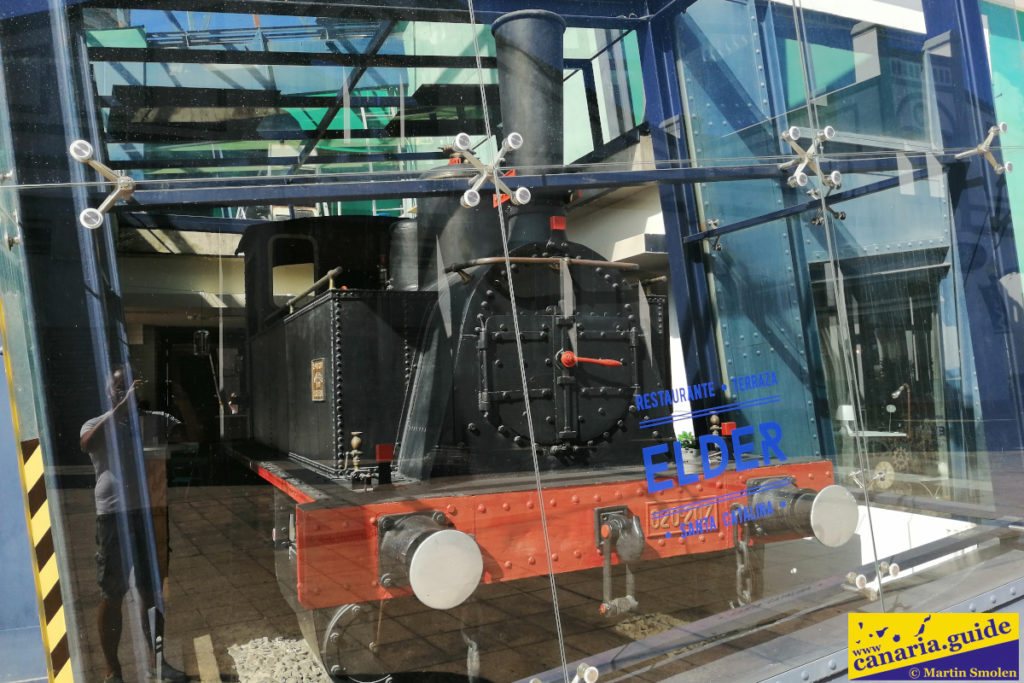
Did you like this article, was it useful to you? You can also support the creation of this website by sending any amount to ES08 0049 5735 1122 1616 5370, swift BSCHESMM. Include “Canaria Guide Support” in the note. Thank you for supporting.
(period photographs: FEDAC)


